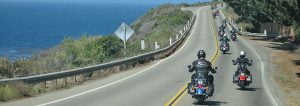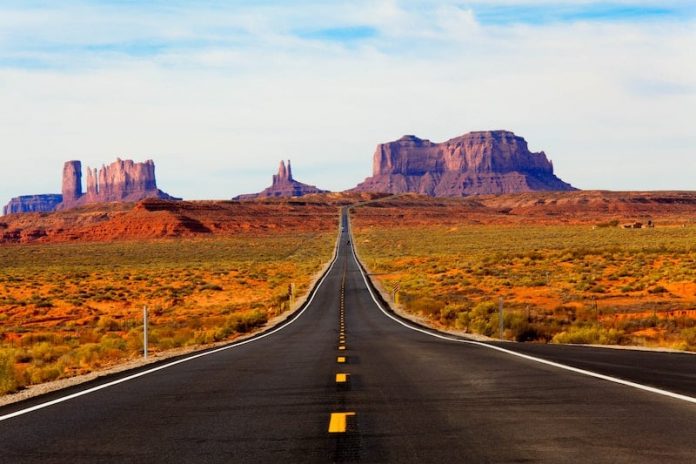There’s nothing quite like hitting the wide road on a motorcycle-the air is energizing and feels new. Getting some fresh air and moving around can enhance your mood. Everything appears closer, including the sounds and the views, and riders feel more connected to the natural world. That is a major perk for a summer road trip across the United States.
Despite being swift and flexible, motorbikes are also the most vulnerable to traffic accidents and other road hazards and fatalities. According to statistics from the NHTSA, there were about 82,528 motorcyclists injured and 5,579 fatalities in the United States in 2020. Due to the limited or lack of protections between vehicles and motorcycles, the motorcyclists often suffer the most injuries when a collision occurs.
However, drivers are not the only ones that pose a threat to motorcyclists. Inadequate road maintenance and defects in road design cause many problems. It is not uncommon for motorcycle attorneys to use the legal system to tackle unsafe road conditions caused by negligence. Motorcyclists are particularly vulnerable to risks such as fatal motorcycle accidents, severe injuries, and even death from open grate bridges, improperly paved roads, crosswinds, debris, and potholes.
Why Are Motorcycle Accidents More Dangerous Than Car Accidents?
Essentially, motorbikes compromise maneuverability for safety. A significantly higher percentage of fatal injuries occur when there is no barrier between the driver and other cars or the road itself. The reality is that the presence of such protective features as airbags and crumple zones in these cars is what ultimately saves the lives of their occupants. Motorcyclists are more likely to die per mile driven than car drivers, and five times more likely to be wounded. This may be due in part to the absence of comprehensive safety equipment.
Are Highways Still Safer?
Generally speaking, highway speeds are more stable, making driving there a safer option. There is a steady flow of traffic; there aren’t many stop signs, red lights, or other potentially dangerous objects. The lanes are broader, allowing the rider more alternatives for where to travel in the lane, and intersections are more dangerous for motorcycles.
Finally, unlike on back roads, you won’t be directly in the path of oncoming vehicles in the opposite lane. When you consider that, it becomes clear why the streets are not safer. Here in New York State, county and rural roads are considerably riskier to travel on than interstates. Some of the most enjoyable locations to the bike are our back roads here in New York, however, it’s a nice thought to keep in mind when you’re out there.

Road infrastructure and Motorcycle safety
Historically, road infrastructure has prioritized economic efficiency and mobility over safety, especially for non-motorized road users. Walking, riding, and motorcycling have grown less frequent and riskier as global motorization rises. As a result of the traffic patterns in many nations, motorcyclists and cyclists must frequently share the road with fast cars and trucks, putting them at risk.
Sustainable urban designs, however, make it possible for cities to be connected, lessen the need for driving, and give priority to the capacity of vulnerable road users, such as motorcyclists, cyclists, and pedestrians, to thrive with automobiles. Considering citizens in road planning and improvement projects has been shown to boost accessibility and cut down on traffic-related casualties.
It’s also worth noting that road safety regulations, as well as infrastructural elements, differ from state to state. Some parts of the country are better equipped to keep all road users safe than others, which is why you need to be aware of this if you’re planning any long-distance trips that cross state borders.
For example, the rules and regulations regarding motor vehicles in New Jersey are markedly different from those in Florida, and so forth. States also invest different sums in updating and improving the road infrastructure, and there are all sorts of issues over how funding is allocated and where spending is concentrated.
How to Ensure Safety with Motorcycles
Here are some insightful tips to improve safety with motorcycles:
Ensure You Have the Required Licenses
It takes distinct knowledge and abilities to operate a motorbike and a vehicle. While each state has its own set of laws on motorcycle licenses, all of them require a separate motorcycle endorsement to be legally able to ride a motorcycle. In most jurisdictions, you must pass written and on-cycle skills exams given by your state’s licensing office to earn the appropriate endorsement.
In addition, you may be required by some states to complete a rider education program. If you’ve already completed and passed a state-approved course, some employers will waive the on-cycle skills exam. In either case, taking a motorcycle rider education course is an excellent method to make sure you have the knowledge and experience necessary to ride a motorcycle safely.
Get Some Bike-Riding Experience
Motorbike handling and responsiveness might vary, so it’s important to take the time to ride a newly purchased or unfamiliar motorcycle in a controlled environment to become used to how it feels. You can ride your bike in traffic once you feel confident doing so. Get some experience riding in different weather and road conditions (e.g., rainy or dry days, potholes, road debris, etc.).
Inspect the Motorcycle before Each Ride
Before setting out on your motorbike, take caution to inspect the tires, brakes, lights, signals, and fluids. Additionally, look below the motorcycle for any indications of an oil or gas leak. If you’re riding with a passenger, that person should only get on the motorcycle after the engine has started, and always keep both feet on the footrests. They should also hold on tightly to your waist, hips, or belt, move around as little as possible, and bend at the same time and in the same position as you.
Use Motorcycle Gear
A motorcycle helmet is your best bet for preserving your brain in the event of a major motorbike collision. Wearing leather or strong denim to protect your arms and legs is highly recommended when riding a motorbike. Protective gear not only shields wearers in crashes but also helps keep wearers hydrated. Gloves offer you a better grip and aid in hand protection in the case of an accident, while boots or shoes can cover your ankles. You can increase your visibility to other drivers of vehicles by using brightly colored clothes with reflective material.
Ride Sensibly
Experienced motorcyclists avoid risks and are aware of local traffic laws. Respect traffic signals, signs, speed limits, and lane markings. Ride in the direction of traffic and give other vehicles plenty of room to pass. Always look back before changing lanes and use your turn signal. Drive slowly at intersections and, where necessary, give way to pedestrians and other cars.

Don’t Drink and Ride
Alcohol and drugs, including certain prescribed medications, impair your judgment, balance, stability, speed control, and gear-shifting abilities. Additionally, these medications decrease your attentiveness and reaction speed. Predicting the actions of other cars or people is difficult, even when you’re paying close attention. Therefore, before getting on your motorcycle, be sure you are sober.
Best Motorcycle Roads in the US
Need to locate the best motorbike roads for a weekend trip or a big cross-country adventure? This list considers the different factors that makes a motorcycle road fantastic, including landscape, adventure, road condition, and twisting turns! Here are some of them:
- California Route 1, Pacific Coast Highway.
- Red Rock Scenic Byway, Arizona
- The Selkirk Loop, Washington, Idaho, British Columbia
- Blue Ridge Parkway, North Carolina
- Big Sur Coast Highway Route 1, California
- The Florida Keys Scenic Highway
- Going to the Sun Road, Glacier National Park, Montana.
- Natchez-Trace Parkway, Mississippi, Alabama, and Tennessee
- Trail Ridge Road/Beaver Meadow National Scenic Byway, Colorado
- Great River Road National Scenic Byway, Louisiana to Minnesota


















